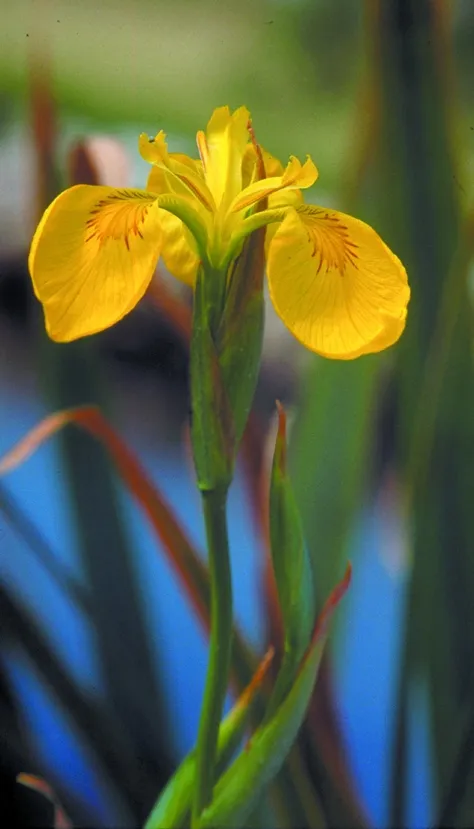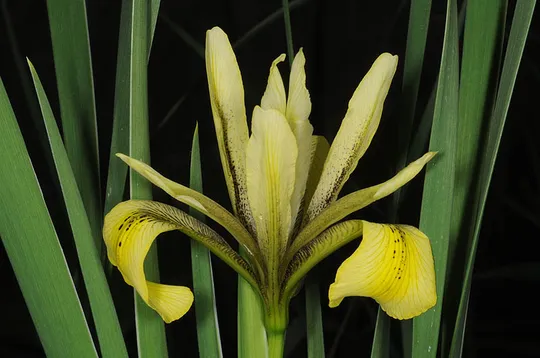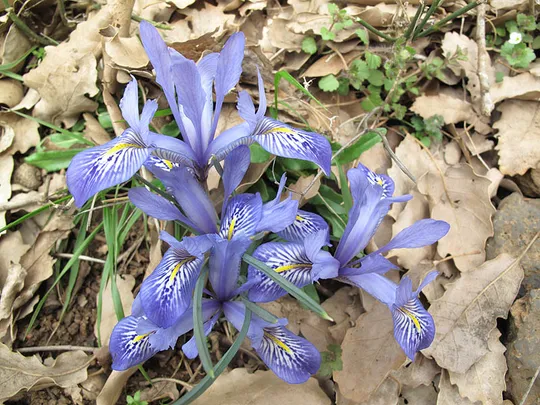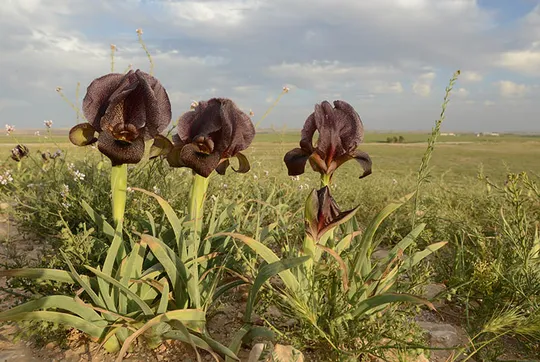Dark-purple Iris, Coastal Iris
Iris atropurpurea
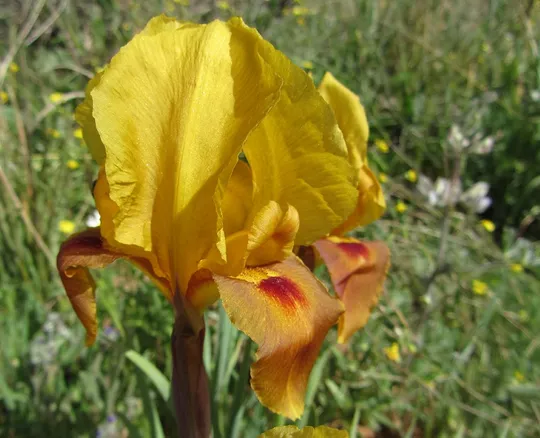
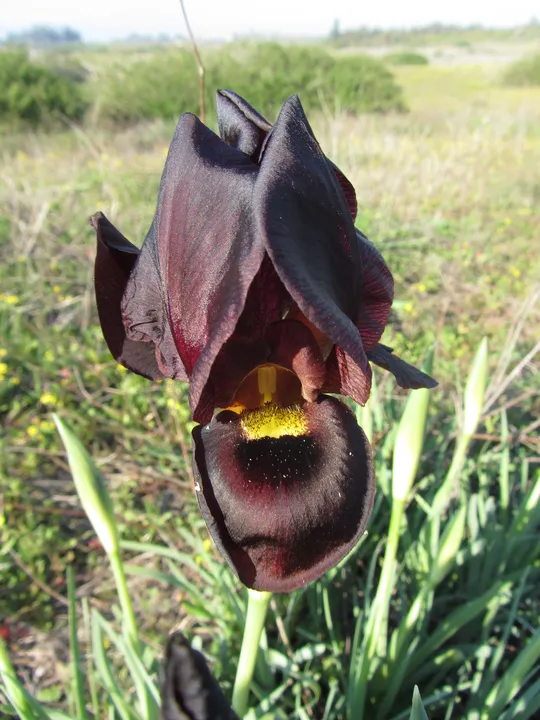
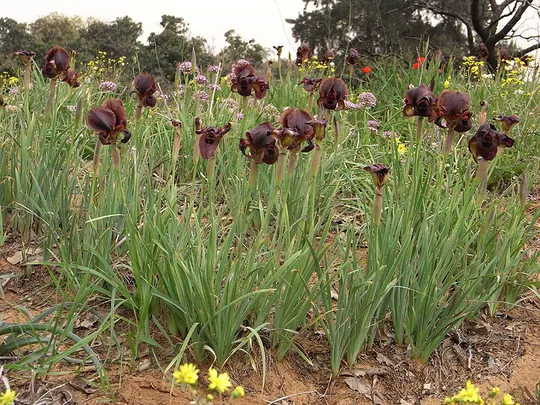
Iris atropurpurea is a geophyte in the royal iris group (Section Oncocyclus), which reaches a height of 20-40 cm. Its leaves are pale green to bluish and the flower diameter is 7- 9 cm. The perianth segments are all the same dark color. The flower shades vary greatly within populations, from purple to yellowish-purple. A prominent band of yellow hairs, termed a beard, is located along the midline of the outer perianth segments whose base forms the lower section of the pollination tunnel. I. atropurpurea is the earliest blooming species among the royal irises: flowering begins in late January and usually peaks around mid-February; sometimes it continues until early in April. Male solitary bees of the genera Eucera and Chalicodoma pollinate the species; they spend the night in the flowers or take cover in them in stormy weather.
Its distribution is limited to patches on Israel's coastal plain mainly in the Sharon and Philistean Plain regions, from Atlit in the north to Gedera in the south. A geographically fragmented population, which may have been introduced by humans, was found on the Carmel coast near Megadim Beach. In the past, it was very common on the coastal plain but today 55 populations remain most of them threatened.
Hamra and sandy Hamra soils.
Iris atropurpurea belongs to the dark, royal irises, which are almost impossible to distinguish morphologically. It t is very similar to I. atrofusca and I. petrana. It differs from them mainly in its unique habitat on the coastal plain, and its early flowering season. The morphological similarity analysis between populations suggests that the origin of I. atropurpurea is probably from the Judean Desert populations of I. atrofusca.
• The open areas of Hamra and sandy Hamra soils have almost disappeared from the coastal plain due to development for agriculture and construction. The remaining areas that are not protected in nature reserves are seriously threatened. The artificially fragmentation between populations and the lack of seed and pollen distribution corridors, may create genetically isolated populations and lead to a decline in genetic diversity.
• The populations occur in patches. The coastal plain sites are fragmented and separated by agricultural and urban areas.
• In undisturbed patches, populations are stable, and possibly even increasing. In recent decades, there have been initiatives by local residents to increase fruit formation by manual pollination.
• The threat in Israel is global, as the species is endemic to Israel.
• It is protected in the Iris atropurpurea Nature Reserve (Bet Hanan), in the Wadi Poleg Nature Reserve, in the Ashdod White Acacia Nature Reserve and in the Kadima Nature Reserve. It also grows in in the proposed urban nature reserve in southern Netanya that is threatened by development.
Population monitoring, addition of protected areas, such as the Bet Oved Ridge, which will protect the Philistean Plain population. Reintroduction to nature in areas that can function as ecological dispersal corridors between the southern coastal plain and the northern populations.
Endemic to Israel.
A geophyte endemic to Israel's coastal plain, which belongs to the royal iris section, among the most beautiful and unusual plants in Israel. Grows on Hamra and sandy Hamra soil, which is a preferred target for development and construction. Its habitat is disappearing rapidly. Among the hundreds of populations and flowering locations that survived on the coastal plain at the beginning of the twentieth century, only some 55 populations remain, mostly critically endangered, and their future survival is in question. Is of highest conservation priority.
Current Occupancy Map
| 1000 squre meter pixel | 5000 squre meter pixel | 10000 squre meter pixel | |
|---|---|---|---|
| number of observations | 0 | 0 | 0 |
| in total pixels | 0 | 0 | 0 |
| Family | Iridaceae |
| Classification | On the endangered species list |
| Ecosystem | Coastal area |
| Chorotype | Endemic to the Mediterranean Belt |
| Conservation Site | Wadi Poleg nature reserve |
| Rarity |
1
1
6
|
|---|---|
| Vulnerability |
0
4
4
|
| Attractiveness |
0
4
4
|
| Endemism |
0
4
4
|
| Red number |
1
6.8
10
|
| Peripherality | 0 |
| IUCN category | DD EW EX LC CR EN VU NT |
| Threat Definition according to the red book | Critically endangered |
 Based on:
Based on:
